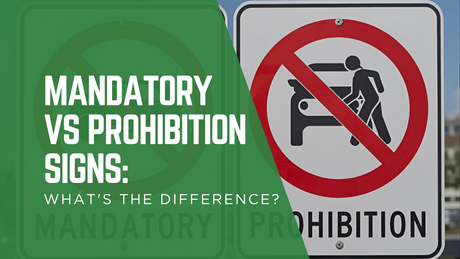Labelling dangerous goods stored in a cabinet is a vital aspect of ensuring workplace safety, compliance with regulations, and facilitating efficient management of hazardous materials.
This article discusses the importance of proper labelling and signage and provides the correct signage for Chemical Storage Cabinets.
Why is Proper Labelling and Signage of Dangerous Goods Important?
Proper labelling and signage of dangerous goods is not just a regulatory requirement; it's a crucial component of maintaining a safe working environment. When storing dangerous goods in chemical storage cabinets, it is essential to display correct dangerous goods signage to inform employees of the potential hazards. This allows employees to follow the correct procedures when handling dangerous goods.
What is the correct signage used for Chemical Storage Cabinets?
Each class of dangerous goods carries distinct risks. To effectively communicate these risks, appropriate signage, often referred to as "dangerous goods diamonds," must be displayed. These signs use recognisable symbols and colour-coding to indicate the hazard class associated with the stored materials.
All chemical storage signage must adhere to the relevant Australian Standard. Adhering to these standards ensures consistency, clarity, and accuracy in conveying hazard information.
Explosive Storage Cabinets
The Australian Standard AS 2178-1998 states a Class 1 label is to be used in accordance with the requirements of AS 1216, of minimum size of side 250mm except for internal portable magazines or external portable magazines with a capacity less than 60 kg or 500 detonators.
An example of a Class 1 label that must be displayed when storing explosives is shown below:
Flammable Liquid Storage Cabinets
The Australian Standard AS 1940-2017 states that each cabinet should be marketed with a Class 3 dangerous goods label with sides of at least 250 mm nominal length;
An example of a Class 3 sign that must be displayed when storing flammable liquids is shown below:
Flammable Solids Storage Cabinets
The Australian Standard AS/NZS 5026-2012 states that each cabinet should be marketed with the relevant dangerous goods division label with sides of at least 250 mm nominal length. All signs and markings shall be clearly visible when the cabinet doors are closed.
An example of each class sing that must be displayed when storing flammable solids is shown below:
Class 4.1 Flammable solids
Class 4.2 Substances liable to spontaneous combustion
Class 4.3 Dangerous when wet
Oxidising Agents Storage Cabinets
The Australian Standard AS 4326-2008 states that signs should comply with AS 1319. Class labels shall conform with AS 1216 and be a minimum of 250mm square.
An example of a Class 5.1 oxidising agent sign that is displayed for storing oxidizing agents is shown below:
Organic Peroxides Storage Cabinets
The Australian Standard AS 2714-2008 states that cabinets should be marked in accordance with Clause 6.3. Placards and signs shall be maintained so as to be legible. Placarding must reflect the actual storage situation and that all signs must comply with AS 1216.
An example of the sign that should be placed on all cabinets storing organic peroxides is shown below:
Toxic Substances Storage Cabinets
The Australian Standard AS/NZS 4452-1997 states that every installation where toxic substances are kept shall be placarded in accordance with the Worksafe Australia “Guidance note for placarding stores for dangerous goods and specified hazardous substances”.
An example of a the sign that should be placed on all toxic substance storage cabinets is shown below:
Corrosive Substances Storage Cabinets
The Australian Standard AS 3780-2008 states that a Class 8 dangerous goods label with sides of at least 100 mm nominal length and all signs should be visible when cabinet doors are closed.
An example of the sign that should be placed on all corrosive storage cabinets is shown below:
Miscellaneous Dangerous Goods Storage Cabinets
The Australian Standard AS/NZS 4681-2000 explains that packages containing dangerous goods shall be marked in accordance with the appropriate Australian State or Territory or New Zealand legislation.
NOTE: In Australia, labelling in compliance with the ADG Code, NOHSC: 2012 and the SUSDP may be required under such legislation.
An example of a compliant miscellaneous dangerous goods sign that should be placed on all miscellaneous dangerous goods storage cabinets is shown below:
Conclusion
Proper labelling for dangerous goods storage on cabinets is a fundamental responsibility for any organisation working with hazardous materials. Following the outlined guidelines, including the strategic use of safety signs, not only promotes compliance with regulations but also establishes a culture of safety awareness and informed decision-making. By prioritising clear communication, organisations create a safer environment for employees, minimise risks, and empower individuals to respond effectively in emergency situations.




